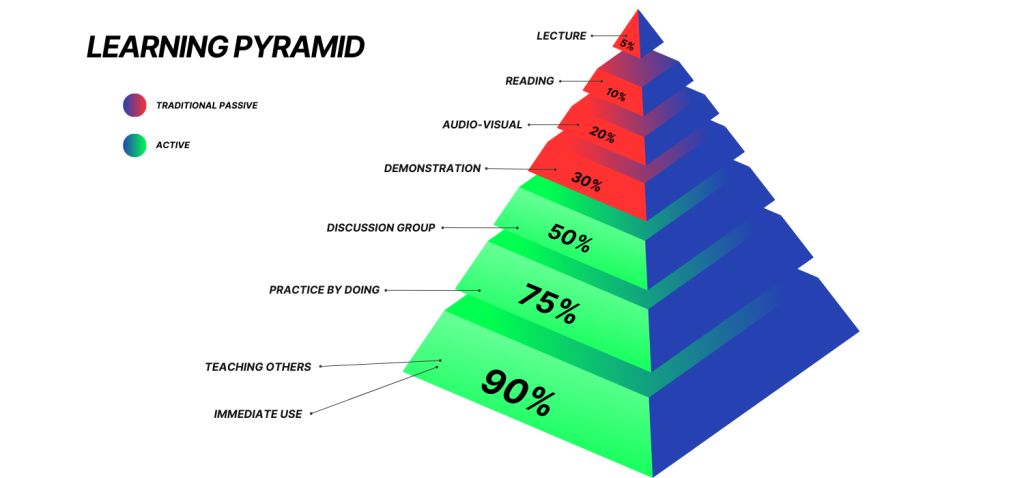The ability to retain information is a cornerstone of effective learning, yet it’s also one of its greatest challenges. Research on the forgetting curve, first identified by Hermann Ebbinghaus, reveals startling statistics: within just 24 hours, most learners forget 70% of new information, and within a week, retention drops to a mere 25%. These figures highlight the urgent need to address how we learn and, more importantly, how we retain knowledge.
This article delves into the latest learning retention statistics for 2024, focusing on adult learners. We’ll explore the science behind memory, the proven effectiveness of active learning methods like the Learning Pyramid, and the role of modern tools such as e-learning in boosting retention. Whether you’re an educator, corporate trainer, or lifelong learner, these insights will equip you with strategies to combat forgetting and maximize knowledge retention.
Let’s uncover how adults can turn learning into lasting knowledge.
Learning Retention Statistics Highlights
Learning Pyramid

The Learning Pyramid is a model that illustrates the different retention rates associated with various learning methods, showing how different approaches impact knowledge retention:
Global Learning Retention Statistics and Facts
- The global corporate e-learning market is projected to reach USD 796.96 billion by 2031, growing at a compound annual growth rate (CAGR) of 14.04% from 2024 to 2031. This rapid growth reflects the increasing demand for online learning solutions in the corporate sector.
- Studies on the forgetting curve reveal that learners forget about 50% of new information within one hour, 70% within 24 hours, and up to 90% within a week. This highlights the rapid decline in memory retention shortly after learning, underscoring the need for effective reinforcement methods.
- 52% of individuals report actively participating in learning, indicating a strong intrinsic desire to learn. This statistic may surprise those in the learning and development field, as it reflects a greater engagement than often anticipated.
- E-learning can significantly improve retention, helping students remember 25% to 60% more information by allowing them to revisit material as often as needed. While it doesn’t replace traditional teaching, this repeated exposure is a valuable tool that enhances understanding and leads to better exam performance.
- 95% of learners report better retention when using video-based educational materials. Additionally, pairing information with a relevant infographic helps readers retain 65% of the content, demonstrating the power of visual aids in learning.
- Student surveys suggest that learners retain only 10% of what they hear, 20% of what they read, and 50% of what they see, these rates are still too low for important subjects. However, active learning through hands-on practice can increase retention to 90%, highlighting the critical role of engagement in the learning process.
Final Thoughts
The challenge of retaining information remains a significant hurdle in the learning process, especially for adult learners. The statistics from the Learning Pyramid and forgetting curve serve as a reminder of the importance of active engagement in learning. While traditional methods such as lectures and reading have low retention rates, more interactive approaches like group discussions, hands-on practice, and teaching others can significantly improve retention, with teaching others offering the highest retention at 90%.
By adopting modern tools and incorporating active learning strategies, learners can combat the forgetting curve and transform their learning into lasting knowledge. These insights offer valuable guidance for educators, trainers, and learners alike, emphasizing that engagement and repetition are the keys to effective knowledge retention.
Sources
1. ferris.edu/university-college/firstgen/student-handbook/howtoretain90.pdf
2. skyquestt.com/report/corporate-elearning-market
3. indegene.com/what-we-think/reports/understanding-science-behind-learning-retention
4. elearningindustry.com/facts-and-stats-that-reveal-the-power-of-the-elearning-sector
5. learningandwork.org.uk/resources/research-and-reports/adult-participation-in-learning-survey-2024/
5. sites/default/files/groups/Writing%20Program/forgetting_curve.pdf
